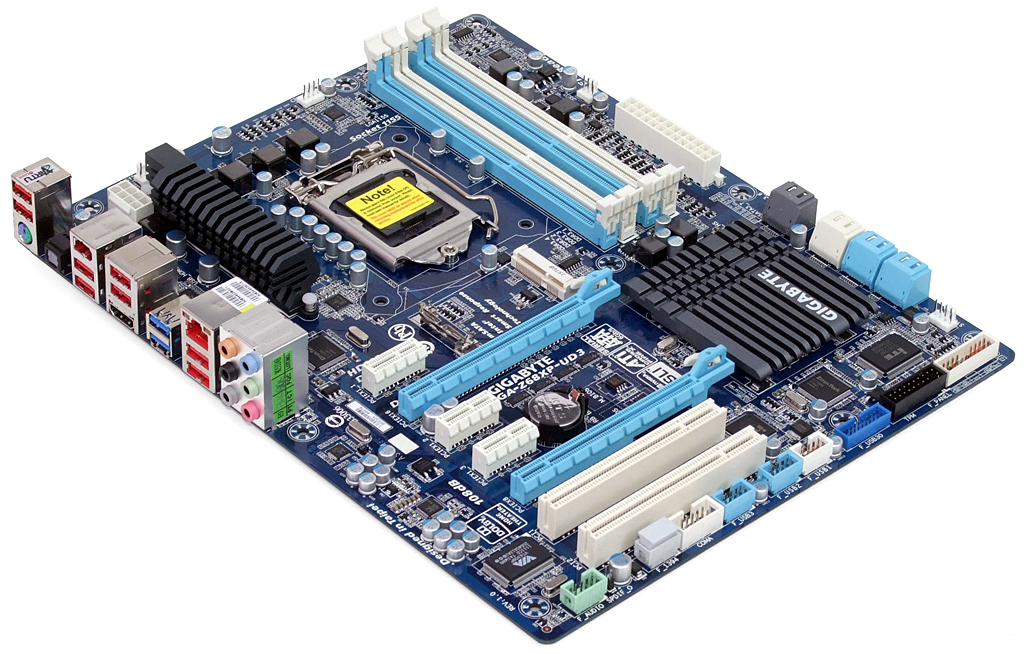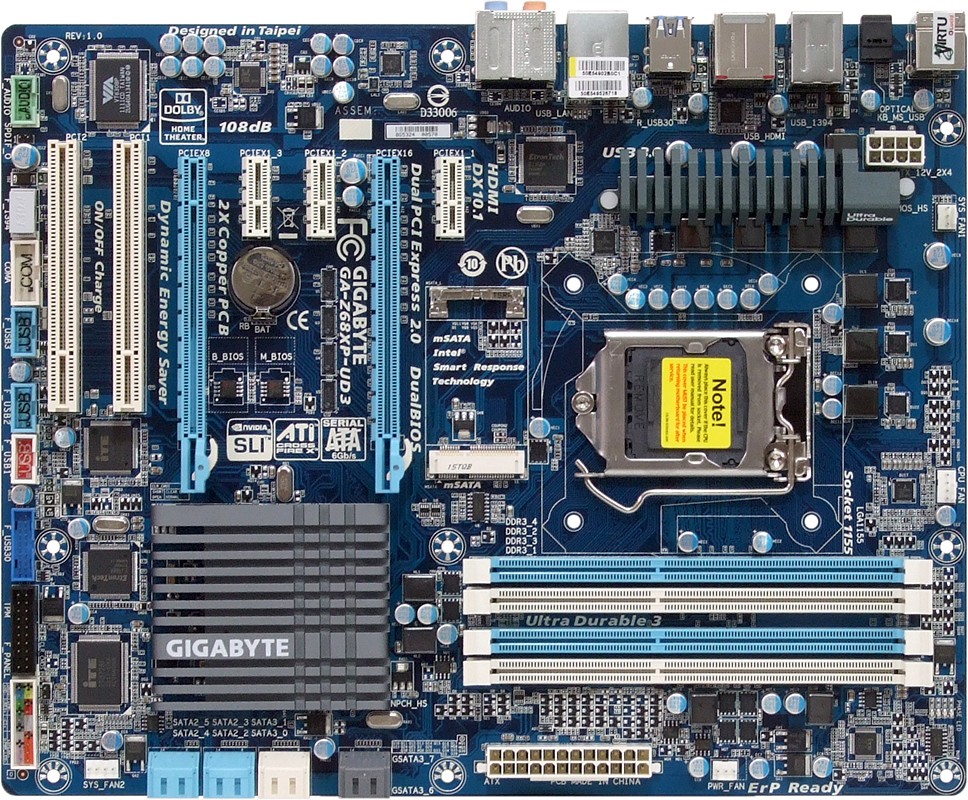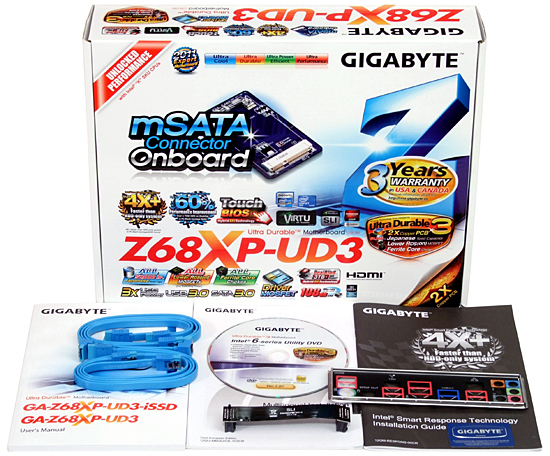From $100 To $160: Five Z68-Based Boards, Compared
Value-oriented system builders celebrate new-found performance and features as Intel continues pushing its mainstream platform towards the high-end. Today, we draw a line in the sand and consider five motherboards priced between $100 and $160.
Gigabyte Z68XP-UD3
The Z68XP-UD3 firmly targets performance fanatics with a layout that eschews the use of integrated graphics as a primary output, instead favoring SLI and CrossFire. This begins with an I/O panel that addresses most of the USB 2.0 ports missing from competing products, but lacks even a single DVI interface.
We’ve been told that at least one physical graphics connection must be present for a Z68-based motherboard to support Quick Sync hardware accelerated video transcoding through the CPU’s integrated graphics engine, and Gigabyte addresses this need by adding a single HDMI connection. The firm also adds a legacy FireWire port, separating the -UD3 from previous upper-range parts only in its lack of secondary network and outdated digital coaxial audio outputs.
Four internal two-lane switches allow the Z68XP-UD3 to automatically change from x16/x0 to x8/x8 transfers whenever a second graphics card is installed, while three PCIe x1 slots connect slower devices. The Z68XP-UD3 uses all eight of the Z68’s PCIe pathways, with a PCIe to PCI bridge, a two-port SATA 6Gb/s controller, network, and dual USB 3.0 controllers consuming the remainder.
Up against the limits of our intended budget, the Z68XP-UD3 is one of only two motherboards in today’s roundup to include a front-panel USB 3.0 header. The entirety of features would have made this a $160 board even if it had used the P67 chipset, so we’re not entirely clear how Gigabyte managed to retain this price with a Z68 product that includes Lucidlogix's Virtu license.
And yet Gigabyte wouldn’t let us get away without mentioning its mSATA socket, a feature used in its more expensive Z68XP-UD3-iSSD to add a bundled 20 GB SLC-based SSD for caching. Buyers of the model viewed today are also able to add their own mSATA drive; just bear in mind that doing so with either board disables one of its SATA 3Gb/s ports.
Other limitations include the 5 Gb/s PCIe interface for the motherboard-down two-port SATA 6Gb/s controller. Dual-drive data rates exceeding 5 Gb/s are limited to the controller's interface performance.
After many years of placing its front-panel audio jack in a more-convenient location, Gigabyte decided to regress to the more traditional bottom-rear-corner. This makes sense for builders whose extra-long cables have been diverted around the back of the motherboard tray, but leaves those with shorter cables stranded. The front-panel FireWire port’s similar location is similarly-inconvenient for owners of conventional cases. Fortunately, most new cases lose this legacy interface.
Get Tom's Hardware's best news and in-depth reviews, straight to your inbox.
The Z68XP-UD3 includes four SATA cables and an SLI bridge, which are our minimum standards for a mid-priced SLI motherboard. Cheaper boards can get away with fewer cables, since the lower price often appeals to budget builders with fewer drives.
-
compton I temporarily used a Biostar TH67+ 1155 mobo until I picked up my new board. After seeing the description of the Z chipset's Graphical UEFI I checked Biostar's website. It looks as though they're released the graphical UEFI for all biostar 1155 mobos.Reply
Now I just wish Intel would do the same -- can't they just rip off Asus's UEFI implementation? -
johnnyb_27 Why not use the MSI's Z68A-G65 instead of the MSI's Z68A-G55? They were the same price but now the drop MSI's Z68A-GD55 to 154 before rebate.Reply -
hatethisbull 90% of this article could've been compressed into the summary page. I would've preferred to see comparisons between, say, a $70 h67 and a high-end z68. Instead of four pages of unsatisfying gaming benchmarks, how about focusing on board usability? Which of the boards have cheap PCI-E retention clips that are going to pop off on first use? Which ones will have blocked ports, etc.Reply -
The Greater Good vilenjanWhat about looks? The gigabyte board looks so meh, while the MSI board is sexy!Reply
Do you stare into your case whilst computing, or do you look at the monitor? -
aznguy0028 The Greater GoodDo you stare into your case whilst computing, or do you look at the monitor?I look into my case daily when I use the computer. There's a reason why there is a window, and hours of hard work for your perfect wiring job deserves much credit and to be stared at. Not to mention coloring schemes that matches your case/mobo pcb color/fan led colors/etc.Reply -
Crashman johnnyb_27Why not use the MSI's Z68A-G65 instead of the MSI's Z68A-G55? They were the same price but now the drop MSI's Z68A-GD55 to 154 before rebate.MSI picked the GD55 because it's SUPPOSED to cost $160. MSI did NOT pick the GD65 because it's SUPPOSED to cost $180. MSI's predictions from a few weeks back simply didn't pan out.Reply -
Crashman jerreddreddisn't it time we lost the PS2 port? and maybe even the DB15 VGA port also?Not PS/2, just VGA. They leave the Multi-I/O controller on the board for compatibility in other areas, so PS/2 is "free" and some people still use it at the high end.Reply
Some cheap monitors still use VGA, but these boards are not for the budget market! For VGA compatibility (for external capture devices and such) they could just use DVI-I and let the oddball user who needs VGA for that oddball purpose supply his own adapter.



